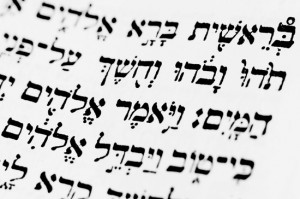 The Old Testament was originally written in Hebrew (with a few chapters being written in Aramaic – a cognate language, like Italian to Spanish). But of course we don’t have the scroll upon which Baruch the scribe first wrote down Jeremiah’s words. That document long ago would have crumbled to dust. What we have for all 39 of our OT books are copies of copies of copies of those originals.
The Old Testament was originally written in Hebrew (with a few chapters being written in Aramaic – a cognate language, like Italian to Spanish). But of course we don’t have the scroll upon which Baruch the scribe first wrote down Jeremiah’s words. That document long ago would have crumbled to dust. What we have for all 39 of our OT books are copies of copies of copies of those originals.
Well…how accurate could that be? Copies of copies? Critics might scoff and refer to the childhood game of “telephone” – consider how garbled those messages become by the time they make the rounds from whispered ear to whispered ear. Perhaps the message would begin “Sarah said ‘hi’ to Lance,” but would end up “Sam wears no pants!”
But this isn’t a game of telephone. These aren’t a bunch of giggling whispering kids delighting in seeing how garbled a message they could pass. Instead what we have is an absolutely remarkable group of men who dedicated their lives to preserving and passing on God’s Word as accurately as possible.
The Old Testament Hebrew manuscript tradition behind modern bible translations is known as the Masoretic text. The text receives its name from the dedicated scribes who preserved the Hebrew OT for centuries: the Masoretes. These were Jewish scribes who were so dedicated to the accuracy of the text that they would count words and letters to assure that their manuscripts were absolutely accurate. Could you imagine counting all the letters in Isaiah? All the words in the Psalms? Me either. This was no “telephone” game.
Even with the dedication of the Masoretes, it is simply impossible to copy texts over and over by hand for centuries without ever making mistakes, and, of course, mistakes were made. What kind of mistakes? The kinds anyone would make. If two lines began with the same word a scribe could accidentally skip to the second line thereby deleting a line or two of text.
Also, certain letters were easily confused. For instance, a daleth (“d”equivalent) and resh (“r” equivalent) differ from one another only by a tiny pen stroke (a “tittle”). If a daleth were substituted for a resh or vise versa we have a textual corruption. The good news is: we have an excellent understanding of the kinds of mistakes that ordinarily occur, and by comparing the various manuscripts, text critics are able to decide scientifically which reading reflects the original.
In addition to the Masoretic text, we have the Septuagint (often abbreviated LXX). The LXX is a Greek translation of the Hebrew Old Testament that had been made prior to the time of Christ (probably beginning in around 200 BC). Why was the OT translated into Greek? Because many of the Jews living in Alexandria, Egypt could no longer speak Hebrew and needed their scriptures in their own language (Greek was the common language of most of the Eastern Mediterranean around this time). Although it is a translation, the LXX gives us a glimpse into what the scholars who translated it must have seen in the Hebrew manuscripts of their day.
An important confirmation of the accuracy of our Hebrew manuscripts came in 1946 when a Bedouin shepherd boy was lobbing rocks into caves near the Dead Sea. When he heard a crash and investigated, he uncovered one of the most significant archaeological finds in history: The Dead Sea Scrolls. These are Hebrew manuscripts from the time of Christ, a thousand years earlier than the Masoretic text we had come to depend upon. The entire OT is represented in these scrolls, with the exception of Esther. What did they show?
They demonstrated a text remarkably akin to that preserved by the Masoretes. This confirmation should serve to bolster the confidence we have in the accuracy of our Bible. Those who preserved these texts did so with the remarkable care and devotion which the Word of God deserves.